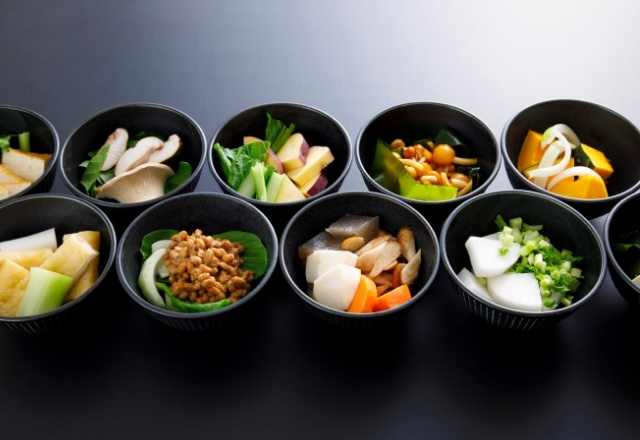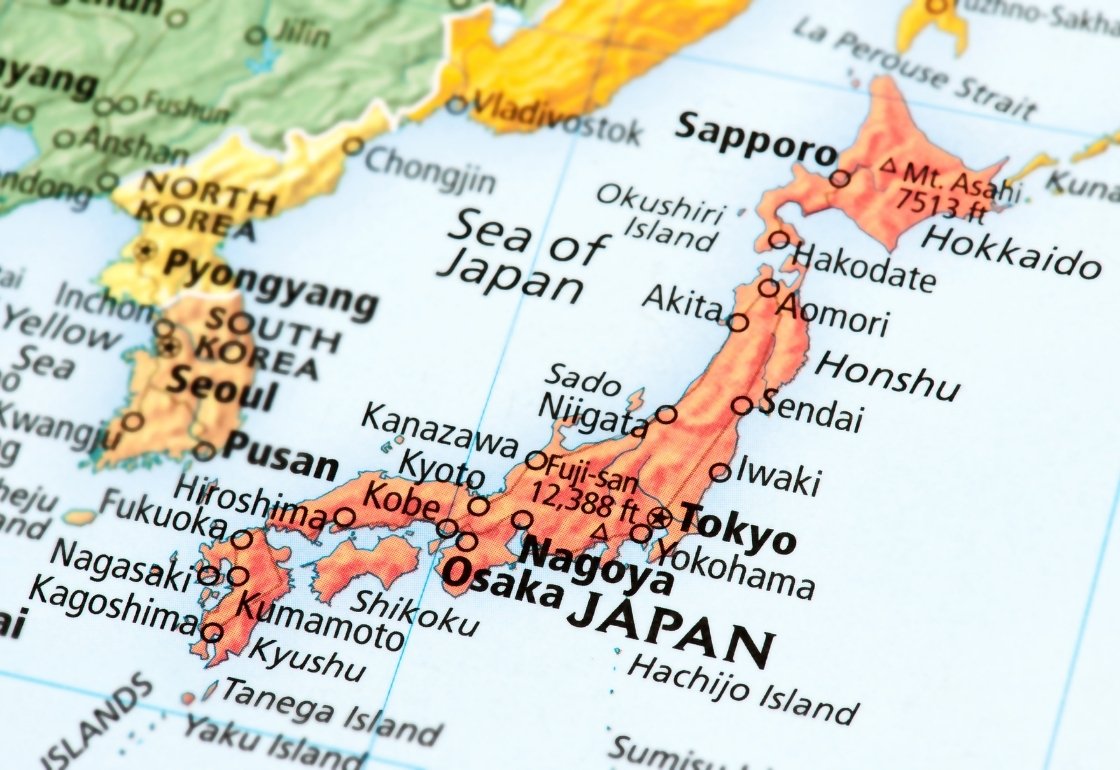If you’re looking for traditional Japanese food with a homemade touch, you don’t look further than 定食 (teishoku), a set meal and a collection of culinary masterpieces. Japan is adored for its rich culture and exquisite art, and the food is no exception. Somewhere in between stools of ramen and family-owned sushi restaurants, comes the nation’s beloved teishoku, an affordable yet filling meal, suited for families, those with dietary restrictions, and everyone in between.

What is Teishoku?
Teishoku means “set meal” in Japanese. If translated literally, it’s a meal that has already been decided (定 means “determine” or “fix”, and 食 means “meal”). In Japan, every ingredient is carefully selected by the chef and the taste of the dish is refined over years of culinary practice. Each dish is a work of art and together the chef’s very own masterpiece hence, a meal that has already been decided and perfected.
Teishoku can be found all the way from the very north, in Hokkaido, down to the most southern island, Okinawa, everywhere from the family home to novelty restaurants. Teishoku wears many hats, acting as a celebratory dinner, an everyday lunch and a home-cooked meal. It’s versatile, delicious and unique to the chef that cooks it. Even the time of year will determine what seasonal ingredients are included. For example, a slice of apple-shaped into bunny ears during apple harvest or in autumn flavourful pumpkin cooked in dashi.
Characteristics of Teishoku
Many meals could be considered a set meal, so you may wonder what sets teishoku aside and why it is different. What makes teishoku a teishoku? Well, a teishoku meal consists of one main, a portion of rice, soup, and a variety of side dishes, such as seasonal vegetables pickled in miso or vinegar. It’s likely you’ll see the same variations of these side dishes and main dishes. The dishes are often based on traditional Japanese recipes, passed down through generations. Wherever you go in Japan you’ll likely be greeted with old and familiar, as well as new and exciting dishes with their own signature taste that is unique to the eatery. Even the rice and miso have their own variations, depending on the cook and the region.
What might come as a surprise to some diners is the mixture of hot and cold dishes. Those used to toasty meals might wonder why certain dishes are cold. However, this is no mistake. It is the coldness that can take away the heaviness of a dish so you aren’t weighed down after a meal. This is why some foods are cooked beforehand and then purposely left to cool back down before serving. A slightly boiled egg and sometimes tempura are perfect examples of this practice.
The Origins of Teishoku
The roots of teishoku lie deep within Japanese culture, originating from a dish called ichijuissai (一汁一菜), which means one soup dish and one side dish. This was a typical meal that was found in temples and like a lot of Japanese cultures has been refined and adapted for today, nowadays taking on a variety of forms.
The traditional Japanese diet has a reputation for being very healthy with fermented foods such as natto (fermented soybeans) and pickles that are good for digestion. Although Japanese food can be a little heavy on salt, it can be balanced out with potassium from a heaping of vegetables and teishoku often springs to life with a spectrum of colors from different vegetables. Furthermore, everything is portioned out meticulously offering a wide selection of food, so you can try a bit of everything without becoming too full. In turn, it makes for an overall super healthy, nutritious and well-balanced meal.

The Art of Scattering Dishes Accompanied by Unwritten Rules
Teishoku is often served on a dark tray with petite dishes delicately arranged in what is actually a very specific order. When it comes to the placing of the dishes, you’ll find that no matter where you go there is a pattern in the order of the dishes.
The most important dish is always placed on the left, closest to you and in Japan this dish is rice. Why rice? The importance of rice is embedded in Japanese culture. It makes an appearance at weddings, and festivals and is offered in the ancestral cove in homes. In Japan, rice is a stable part of the diet, with rice fields covering large portions of the land. It pairs with just about any meal and is a great source of energy for the day. Like how bread and potatoes are to the west, a meal in Japan can feel lonesome without a bowl of rice.

Next, to the right of the rice and closest to you, a bowl of soup is placed. Finally, the main dish is put towards the back of the tray. An unwritten rule for the way to eat teishoku is to eat a little bit of every dish but always go back to the rice in between but it’s okay to eat as you please.
Teishoku is usually served on a familiar rectangular, deep red or black tray which you can spot around Japan but depending on where you go, it can vary in shape, size and color. You might be greeted with a natural wooden tray, or in upscale restaurants, the tray is often a half-moon shape. But no matter the shape of the tray, the placement of the dishes remains the same.
From an artistic perspective, it’s beautiful to see the way bright bursts of colors from the bowl on a teishoku tray. They usually contrast against the dark background and the meal is often enveloped by a single stroke of red encircling the outline of the tray. Even the vegetables and fish cakes are cut into pretty flowers and even when your appetite is sated, the empty dishes are enough to fascinate with their detailed patterns, there is something to marvel at across the whole board.
Where Can I Dine?
Although teishoku can be found all over Japan, it’s very common, so there is an overwhelmingly large variety to choose from. These restaurants can quickly be divided according to your budget. For cheaper eats, there are Japanese fast food chains like Sukiya and Matsuya which can be found in big cities and there you can use a ticket machine to order.
Check out our article on how to order at a Japanese fast food restaurant.
Then there are more family-orientated restaurants like Ootoya that are perfect for those just starting to learn Japanese as they have plastic food displays of everything on offer. There are plenty of others too, from family-owned teishoku restaurants to independent eateries, and even cafeterias and food halls.
If you are looking for a more upscale teishoku restaurant they can also be found usually with a simple search of washoku (Japanese food) or even just entering teishoku in on Google Maps is a good start to see your options.
If you opt to stay in a traditional ryokan (Japanese Inn), you might receive teishoku for breakfast or dinner. It can truly be found everywhere and each location will have its own take on the dish delivering that homemade feel. The one consistency is always the pattern of rice, soup, a main and sides – the rest is purely creative.
Can I Make Alterations? Teishoku With Dietary Restrictions
My family has its fair share of pescatarians, gluten-free and dairy-free people. But teishoku is a meal that could fulfill all dietary requirements and allows them to experience authentic Japanese cuisine. This is because teishoku is made up of lots of little dishes. If one cannot be eaten it can sometimes be substituted, replaced or removed altogether. It depends on the flexibility of the restaurant and you can always check beforehand by requesting an allergy chart.
In some chain restaurants like Sukiya or Matsuya, you can order all the dishes that makeup teishoku separately, effectively inventing your own set meal. This is a great option for those who want to avoid a particular dish altogether or swap it out depending on preference.

Common dishes found in teishoku
With so many dishes making up teishoku, it can be a bit overwhelming as one might try to decipher the contents of all the food in front of them. Each dish is unique and delicious in its own right and you’ll probably be pleasantly surprised. But to help you decipher what you might find on a tray of teishoku, let’s go over the essentials and the ones that might start a curious game of “what’s this?”.
For the main, common types of teishoku include yakizakana (fried fish), tonkatsu (pork cutlet), chicken, and tempura (deep-fried vegetables and shrimp). You’ll find that often a set is named after the main dish.
1. Rice
Although plain white rice is perhaps the most common find, some restaurants will have you choose between white rice and mixed rice. Some of those mixed kinds of rice might include:
- Zakkoku rice. A mix of white rice with grains, seeds and beans for extra fiber and nutrition.
- Takikomi rice. White rice cooked in soy sauce and dashi, and with some vegetables mixed in.
- Kurokome. Oten red in colour, is white rice mixed with black rice and beans.
2. Miso Soup
Teishoku isn’t complete without soup and the most common soup you can expect to find is miso soup, one of Japan’s famous comfort foods. Eaten almost every day, miso soup, as the name suggests, is made from miso (fermented soybeans). It’s usually added with a dash of salt and some grains. In Japan, 80% of the time these grains are rice.
A key component of miso is koji which is the mix of microbes to kick-start fermentation. It is thanks to these microbes that miso is often hailed as a probiotic, providing many nutritional benefits when eaten in moderation. For miso soup, soft miso paste is combined with dashi, a soup stock, usually one of two types, either kombu (kelp) or dashi made from fish flakes. Then together with the soup, an assortment of vegetables, wakame (seaweed) and tofu are added for texture. A common type of miso soup also includes pork, called tonjiru.
The taste, textures, flavor and even the miso used in each miso soup are unique to wherever you are in Japan, and can even differ depending on the home, with some people making their very own miso from their farm. You’ll find three different types of miso in a Japanese supermarket: shiro (white) the sweetest, aka (red) fermented the longest and the strongest, and shinshu (yellow) which is somewhere in between the two and the most versatile.
Each prefecture in Japan boasts its own miso. Nagano is the birthplace of shinshu miso and Aichi is proud of its aka miso and depending on the region the contents of the miso soup will also alternate, for example, in Hokkaido salmon is added, and in Shizuoka they add shirasu (whitebait fish), a local delicacy.
Also check out: 11 Things to Do in Hokkaido.
3. Sides and Specialities
Side dishes are referred to as souzai and can range from salads and pickles to boiled vegetables and small desserts like fruit. Typically you’ll find pickled radish, cucumber or lettuce but when it comes to pickling, a whole variety of different vegetables can be pickled, usually in vinegar and sometimes with a squeeze of yuzu, a Japanese citrus for a flavourful kick.
Depending on the restaurant, they might specialize in a particular dish. For example, if you like nebaneba (sticky) food, one teishoku restaurant offers tororo, grated yam, with every meal which you can mix with your rice adding another layer of depth to the flavor. Plus, it’s great for your digestion.
Conclusion
Teishoku can be easily found wherever you are in Japan and you can really get to know more about the region or the home you are in through a sampling of teishoku. It’s a great way to experience the culture, it’s delicious and there’s something for everyone.
Love what you are reading? Come to Japan on an exciting study-abroad journey!
If you love Japanese culture, why not study Japanese in Japan? Coto is excited to announce that we’re offering a matching service to help students find a Japanese language school that provides student visas.
So if you want to come to Japan, let us help you! We provide free support, no agent fee! Our goal is to help make your dream of moving to Japan come true. Find a language school today and contact us!
FAQ
What exactly is teishoku?
Teishoku (定食) is a traditional Japanese set meal that usually includes a main dish (fish, meat, or tofu), rice, miso soup, pickles, and one or two side dishes. It’s a balanced way of eating that reflects the Japanese concept of ichiju-sansai (one soup, three dishes).
How much does a teishoku meal cost in Japan?
Prices vary depending on the restaurant, but most teishoku meals cost between 700 and 1200 yen. In student cafeterias or chain restaurants, you can often find options for as low as 500–600 yen.
Where can I eat teishoku in Japan?
You can find teishoku at:
- Family restaurants and chain eateries (like Ootoya, Yayoi-ken)
- Cafeterias at schools and companies
- Traditional Japanese restaurants (shokudo)
- Even convenience stores and supermarkets sometimes sell pre-packed teishoku-style bentos.
Is teishoku healthy?
Yes, teishoku is considered a well-balanced meal. It usually includes protein, vegetables, fermented foods (like pickles or miso soup), and carbohydrates, offering a mix of nutrition that supports the Japanese diet.
Can vegetarians or vegans eat teishoku?
Traditional teishoku often includes fish or meat, but some restaurants offer vegetarian options (tofu, vegetable stir-fry, grilled eggplant). Vegan teishoku is less common but can sometimes be found in health-focused cafés or Buddhist temples (shōjin ryōri).
What’s the difference between teishoku and a bento?
Teishoku is a sit-down set meal served on trays in restaurants, while bento is a portable meal box meant for takeout or packed lunch. They share similarities in variety and balance, but the setting and purpose differ.
Do teishoku meals change with the seasons?
Yes! Many restaurants update their teishoku menus seasonally — offering dishes with seasonal vegetables, fish, or hot-pot style meals in winter.





